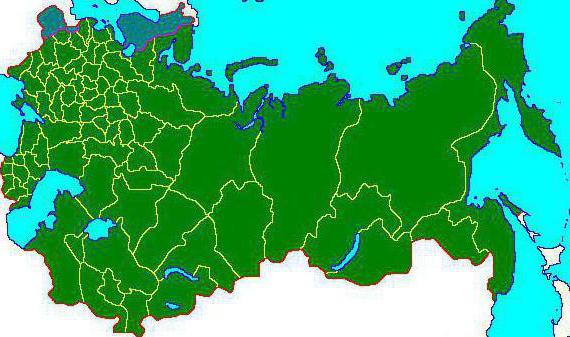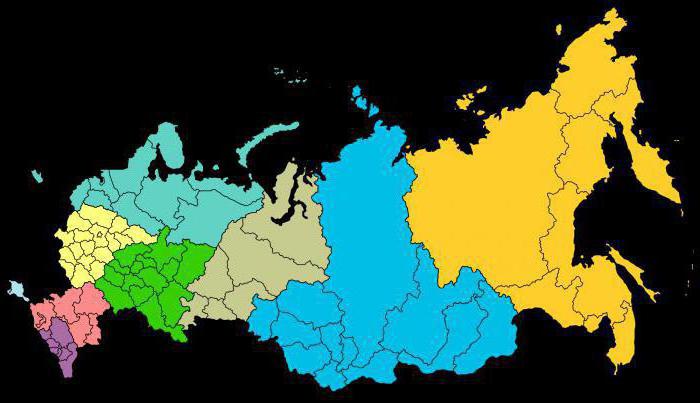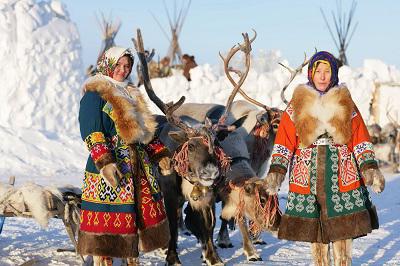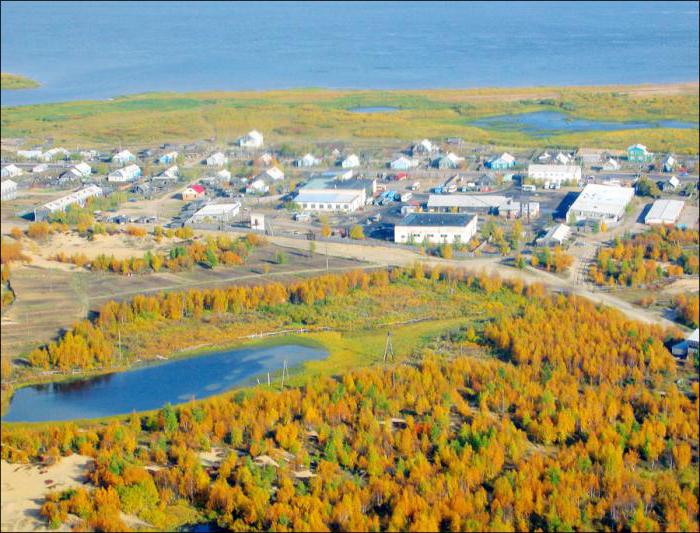In order to make the administrative-territorial division of our huge country, various subjects of the state were identified. With the help of such a division, it is easy to compose a single, in particular separate, system of government and local self-government. The organization of this process is related not only to the vastness of territories belonging to the country, but also to various conditions: climatic, demographic, economic - in different parts of Russia.
Territorial units of the Russian Federation
The implementation of the administrative-territorial division has a very large legal background, the system ensures the activities of the entire state and its subjects in particular.

The administrative-territorial division of Russia at present implies 3 levels:
- Federal districts.
- Subjects of the Russian Federation.
- Economic areas.
Federal districts of the Russian Federation
By a presidential decree in 2000, federal districts of Russia were established in the amount of 7 objects. However, in 2010, President Dmitry A. Medvedev, the then current president, indicated that the territory should be separated from the Southern Federal District, which became separate and is called the North Caucasian Federal District, thereby increasing the number of districts by 1.
And in 2014, our country annexed additional territory, and at the same time, the number of districts increased by another state unit - the Crimean Federal District.

The central federal district, the administrative center of which is the capital of the Russian Federation - the city of Moscow, includes 18 subjects: 17 are regions in the western part of the country and 1 city of federal significance. This is a rather large district in terms of population density, as well as the most urbanized. Its great popularity is due to its location here, the largest, most populous and most economically attractive city in the country - Moscow.
The North-Western Federal District is located in the north-western part of the country, covers 11 constituent entities of the Russian Federation, of which 7 are regions, 2 are republics, one is an autonomous okrug and one city of federal significance is St. Petersburg.
The Southern Federal District is located south of the Central Federal District and covers 6 constituent entities of the Russian Federation: 4 oblasts and 2 republics. This is a rather interesting territory from an economic point of view; 73% of the country's thermal waters and 30% of mineral waters are concentrated here. In addition, the district provides the population of the entire state with agricultural products.
The Far Eastern Federal District is located in the Far East of the country. The structure of this district of Russia includes 9 units: 3 regions, 3 territories, 1 autonomous region, 1 autonomous region, 1 republic. There are rich reserves of gold and diamonds, oil and gas, and a large number of fish are found in the coastal zone.
The Siberian Federal District is another unique territory of the state. Besides the fact that this is the largest hunting ground, a distinctive feature of this district of Russia are the extreme conditions of the Far North for living. The district consists of 5 regions, 3 territories, 4 republics.
In the Urals, the Ural Federal District is located, including 4 regions and 2 autonomous okrugs. This is a kind of bridge between two worlds: Europe and Asia. Here, a combination of the conditions of the Far North and the southern climate of the Kara Sea coast have taken shape.
To the southeast of the Central Federal District is the Volga Federal District. It includes 6 republics, 1 region, 7 regions.
The North Caucasian Federal District is not the youngest, but younger than other districts of Russia.It was formed in the North Caucasus in 2010, includes 6 republics and 1 region.
The last district to join the territory of Russia is Crimean. Here is the Crimean Republic and the city of Sevastopol of federal significance. The Federal District is located on the territory of the Crimean Peninsula and is the smallest among others.
Subjects of the Russian Federation
All constituent entities of the Russian Federation together form our country. Today, such a title can be worn by all, without exception, areas of the country, territory and cities of federal significance as well as republics, autonomous regions and the autonomous region, which is only one in our state.
Both in relation to state authorities and in relation to each other, all subjects of the Russian Federation have equal rights. Local authorities can solve a number of problems at the regional level, however, in any case, all presidential administrations are subordinate.
Autonomous okrugs of the Russian Federation
As part of some areas of our state, there are special territories that are autonomous in nature and therefore are called autonomous districts. From the very beginning, these autonomies were conceived as nationally generalized and at the same time separated from other territories.

To date, 4 autonomous regions of Russia have been formed.
| № | Autonomous counties | Territory | Administrative center |
| 1 | Nenets | 176810 sq. M. Km | Naryan-Mar |
| 2 | Khanty-Mansiysk - Ugra | 534,801 sq. M. Km | Khanty-Mansiysk |
| 3 | Chukchi | 721481 sq. M. Km | Anadyr |
| 4 | Yamal-Nenets | 769,250 sq. M. Km | Salekhard |
City districts of the Russian Federation
In the Russian Federation, the name of an urban district is an urban settlement that is not part of a municipality. Moreover, such an entity has the authority of both the settlement and the municipality.
From the very beginning, urban districts of Russia were conceived as the largest, economically and industrially important cities of the country. This is exactly what happened in 2003-2005. In addition, cities that have no special merit in the economy, but occupy a large territory and have high urbanization, received the status of a district.

Such a reform did not receive much recognition, since at that time other highly industrial cities continued to be part of one or another municipal formation. At the beginning of 2014, there were 520 urban districts of Russia, and these are not only cities, but also villages. In addition, in recent years, entire municipal districts began to be part of urban districts.

